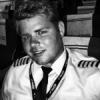
IFR vs. VFR Altitudes
#1
Posted 16 December 2007 - 09:58 PM
1) I am confused about required altitudes-
VFR - 0-179 = Odd + 500
180-359 = Even + 500
IFR = (1) The applicable minimum altitudes prescribed in parts 95 and 97 of this chapter. However, if both a MEA and a MOCA are prescribed for a particular route or route segment, a person may operate an aircraft below the MEA down to, but not below, the MOCA, provided the applicable navigation signals are available. For aircraft using VOR for navigation, this applies only when the aircraft is within 22 nautical miles of that VOR (based on the reasonable estimate by the pilot operating the aircraft of that distance); or
So, the +500' only applies to VFR. By this theory you could have planes within 500' of each other - one flying VFR the other flying IFR? Is the idea to keep VFR and IFR people separated?
2) Can a VFR pilot file a IFR flight plan - may be not IFR but what if the VFR wanted to fly on the Victor airways without being instrument rated?
Thanks
Bman.
#2
Posted 16 December 2007 - 10:24 PM
If you fly VFR plans, you will have to file it @ IFR + 500' or FL005. So 185, 155. 4500', 7500'.
IFR never flies above 19000' as that's class A and is only for IFR plans.
Also eastbound flights have odd levels and westbound even. But over the atlantic, @ pilot discrition they can fly what they want.
Depending on the class you are flying in you are seperated or its on your own. Usally you can ask for traffic advisory.
2)
I am allowed to file an VFR flightplan over airways. Although I have to be in VMC conditions.
Like a flight I do almost every week: TNCC-TNCB = PJG A517 PJB DCT TNCB.
I have to tell you though, Im not flying under FAA licences, so it may be different for the other guys.
Hope this helps
#3
Posted 16 December 2007 - 10:35 PM
 Pattyboy10, on Dec 16 2007, 07:24 PM, said:
Pattyboy10, on Dec 16 2007, 07:24 PM, said:
In the United States, you can't fly above 18000 feet without an IFR flight plan. 18,000 to 60,000 is Class A airspace.
Quote
You can't actually file a IFR flight plan, but you can have a VFR flight plan that takes you on Victor airways.
#4
Posted 16 December 2007 - 10:52 PM
 Pattyboy10, on Dec 16 2007, 09:24 PM, said:
Pattyboy10, on Dec 16 2007, 09:24 PM, said:
I think you mean VFR never flies above 19000'
 Pattyboy10, on Dec 16 2007, 09:24 PM, said:
Pattyboy10, on Dec 16 2007, 09:24 PM, said:
Only if they're on an applicable NAT, or if they have the approval of ATC.
#5
Posted 16 December 2007 - 10:56 PM
What's different in Canada is when flying at VFR altitudes you have to go according to your direction of flight. So if you are flying westbound VFR you would fly even thousands + 500FT. If you are flying VFR eastbound you would fly odd thousands + 500FT.
#6
Posted 16 December 2007 - 10:58 PM
 Westjet737, on Dec 16 2007, 07:56 PM, said:
Westjet737, on Dec 16 2007, 07:56 PM, said:
What's different in Canada is when flying at VFR altitudes you have to go according to your direction of flight. So if you are flying westbound VFR you would fly even thousands + 500FT. If you are flying VFR eastbound you would fly odd thousands + 500FT.
That's how it is in the US too. It's not that VFR flight is from 0-18000, IFR can also fly down there.
#7
Posted 16 December 2007 - 11:01 PM
Quote
#8
Posted 16 December 2007 - 11:12 PM
VFR flight plans are more of a safety of flight thing. If you don't show up (close your flight plan) within a half hour of your planned arrival time somebody starts looking for you. That's a lot better than nobody knowing you even went flying that day.
Also, VFR pilots on an easterly course(0-179) fly an odd +500 altitude, while pilots on a westerly course(180-359) fly an Even + 500 altitude. This ensures at least 1,000ft of vertical separation between VFR aircraft on opposite courses and 500ft vertical separation with IFR aircraft.
IFR aircraft follow the same course directional rules, but fly at even altitudes, thus ensuring 1,000ft vertical separation between opposing IFR aircraft and 500ft with VFR aircraft.
A good way to remember the directional rule is, "People from the East are odd", it works for me.
#9
Posted 16 December 2007 - 11:46 PM
#10
Posted 17 December 2007 - 10:29 AM
#11
Posted 17 December 2007 - 10:40 AM
Edited by sweetfracture3, 17 December 2007 - 10:41 AM.
#12
Posted 17 December 2007 - 11:51 AM
1) I can fly VFR on a IFR / Victor Airway - file a VFR plan not IFR
2) I can fly those routes using the the altitudes listed +500' (for VFR only)
3) Under IFR you fly the altitudes listed and can not stray
I guess the thing is, VFR you can fly where you want. Altitudes are specified generally based on the east / west requirements. If VFR is flown you can fly a victor airway if you want but at your discretion.
#13
Posted 17 December 2007 - 01:33 PM
 Bman., on Dec 17 2007, 11:51 AM, said:
Bman., on Dec 17 2007, 11:51 AM, said:
1) I can fly VFR on a IFR / Victor Airway - file a VFR plan not IFR
2) I can fly those routes using the the altitudes listed +500' (for VFR only)
3) Under IFR you fly the altitudes listed and can not stray
You pretty much got it.
1)You are not required to file a VFR flight plan, ATC never sees it. Flight service stations(provide weather briefings, pilot services, etc) are the only ones that know you have a VFR flight plan open. If you don't call them over the radio or on the phone and close the flight plan within a half hour of planned arrival time they start looking for you. If they can't confirm you made it to the destination they send out search crews, probably the civil air patrol.
2)Yup you can fly those routes - they are shown on both VFR sectional charts and IFR enroute charts - the sectional charts don't list an MEA for them however.
3)Correct, you can use altitudes above the MEA or MOCA, but not below. If your in a radar environment ATC may authorize you to a MVA(minimum vectoring altitude) if you are unable to comply with the MEA/MOCA. MVAs are not published, you have to ask the controller. They are mainly used when an aircraft is trying to get out of ice or something along those lines.
 Bman., on Dec 17 2007, 11:51 AM, said:
Bman., on Dec 17 2007, 11:51 AM, said:
Yup, under VFR you can basically navigate as you please, with a few limitations concerning airspace and such. One misconception a lot of people have is that you must be on a flight plan at all times and are being controlled by ATC in some manner. That is not the case, you could fly from the east coast to the west coast without ever talking to anybody if you really wanted.
You can use ATC services (flight following) during VFR flight, which is mostly implemented to provide traffic advisories and possibly sequencing to your destination. The service is provided on a workload permitting basis - if the controller is too busy with IFR aircraft he can deny your request.
Edited by sweetfracture3, 17 December 2007 - 01:36 PM.
#14
Posted 17 December 2007 - 02:38 PM
If you are flying a VFR plan are you typically still vectored out of an airspace?
#15
Posted 17 December 2007 - 05:39 PM
 Bman., on Dec 17 2007, 01:38 PM, said:
Bman., on Dec 17 2007, 01:38 PM, said:
Depends where you're flying out of. If you're flying out of, say, a class B airport, perhaps you'll receive vectors from the departure controller if traffic/spacing requires it. You'll also have to get a VFR departure clearance through/out of the class B airspace. If you're flying out of an uncontrolled field in the middle of nowhere, chances are you probably won't even talk to anyone except the local unicom.
Edited by Evan., 17 December 2007 - 05:41 PM.
#16
Posted 17 December 2007 - 06:41 PM
VFR pilots can't file IFR flight plans. They CAN however, file IFR routes (excluding SID/stars)
#17
Posted 17 December 2007 - 09:40 PM
#18
Posted 17 December 2007 - 10:26 PM
 scavers, on Dec 17 2007, 05:41 PM, said:
scavers, on Dec 17 2007, 05:41 PM, said:
VFR pilots can't file IFR flight plans. They CAN however, file IFR routes (excluding SID/stars)
And not J airways either, as those are above FL180, therefore they are in class A airspace... which is prohibited to VFR flights as previously mentioned.
#19
Posted 17 December 2007 - 11:16 PM
#20
Posted 19 December 2007 - 03:57 PM



















